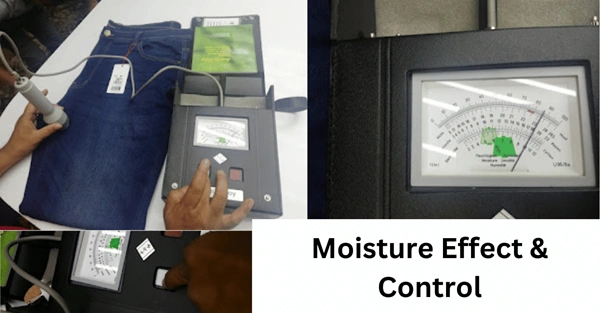Different Types of Garments Washing Techniques
Different Types of Garments Washing Techniques
Washing: Generally, washing means cleaning dirt and dust with water, chemicals used for washing, and soap. But Washing is a term that contains a significant meaning in garments. Washing is a process that is used to change or modify outlook, appearance, comfortability, and feel. Here we present Different Types of Garments Washing Techniques.
Purpose of washing:
- To modify outlook or appearance.
- To clean the Garments.
- To remove waste materials, dust, and dirt from the garments
- To make the garment comfortable.
- To make garments soft and handy.
- To make the garments wearable after buying.
- To make the garments look old.
- To make the garments Toxin-free.

Different Types of Garments Washing Techniques
Mainly two types of washing are done –
- Wet washing process
- Dry-washing process
Wet washing Process: The wet washing process is a process where water and liquid chemicals are used in washing at a definite temperature according to a recipe. The wet washing process is classified into-
- Normal Wash
- Pigment Wash
- Enzyme Wash
- Stone Wash
- Bleach Wash
- Bleach stone Wash
- Acid Wash
Dry Washing Process: This process is a type of process Where No water is used In Washing. The dry Washing process is classified into-
- Sandblasting
- Whiskering
- Hand scrapping
- PP spray
- Destroy
- Grinding
Both Denim and Non-Denim Follow the following process according to Washing Standard.
Dry Washing process flow chart :
Garments Receive
↓
QC
↓
Find out sewing problem & measurement checking
↓
Whisker
↓
Hand Sanding
↓
Tagging
↓
Final QC
↓
1st Wash
↓
Hydro
↓
Dryer
↓
QC
↓
Grinding
↓
Destroy
↓
PP Spray
↓
Send to Wet Wash
Wet Washing Process flow chart:
Garments Received
↓
Dry Process
↓
Send to wet wash
↓
Garments load on washing M/c
↓
Desizing
↓
Enzyme
↓
Bleach( if Need)
↓
Neutralization
↓
Extracting
↓
Drying
↓
P.P Spray (if need)
↓
Neutralization
↓
Tinting (if Need)
↓
Softener
↓
Extracting
↓
Drying
↓
3D
↓
Curing
↓
Qc
↓
Delivery
Wet Washing Process
Normal Wash: Normal Wash is a process of cleaning, removing dust, dirt, and starch from the surface of the garments by the form of a solution. It is a simple washing process.
Purpose of Normal Wash:
- To remove starch from the surface
- To remove dust and dirt from the garment’s body.
- To look, Shine.
- To make the soft hand feel.
- To make it able to wear after purchasing.
Steps of Normal Wash:
Desizing
↓
Softening
↓
Hydro extract
↓
Dryer
↓
QC & Delivery
Steps are described with the recipe:
Step 1: Desizing: Desizing means to remove size materials from the surface.
Let, The batch contains 70kg twill/denim garments.
Recipe: M:L =1:8
Detergent=0.5gm/L
Temperature= 40-60˚C
Time =5-10 min
Drop the liquor
Cold wash
Step 2: Softening: Softening is done to soften the garments for soft hand feeling.
Recipe:
M:L =1:8
Time =5-10 min
Temp= 20˚C
Softener =0.6gm/L
Acitic Acid =0.5gm/ L
Drop the liqure
Unload the garments
Hydro extract: In this step, the extra water is removed by using the Hydro extractor machine.
Dryer: A dryer is used to dry the garments.
Load the dryer
Temp= 60-70˚C
Time= 40-50 min
And Time =10-15 min for cold dry
QC & Delivery: After drying, the garments are checked, and if ok, they are then sent to finishing.
Acid Wash: Acid Wash is the most common and popular washing process in the washing section. Acid washing is a process of partially bleaching with chlorine bleach. Most of the time, Pumic stone is used during acid wash. Pumice stone is a lightweight stone produced from volcanoes explosion. The pumic Stone is used as a brush. The action between garments and pumic stone surface produce a fading effect. The more action happens, the more fading effect produce and vice versa. To minimize the cost and Washing standard matching foam is used.
Purpose of Acid Wash:
- To make the garments old-looking.
- To improve softness.
- To achieve buyer standards.
- To increase rubbing fastness.
Steps of Acid Wash: The following Steps are maintained through the acid washing process.
Desizing
↓
Hot Wash
↓
Acid Wash
↓
Cleaning
↓
Neutralization
↓
Soft Wash
↓
Hydro extract
↓
Dryer
↓
Delivery
Steps are described with the recipe:
Let, The batch contains 70kg twill/denim garments for washing.
Step 1: Desizing: Desizing means to remove size materials from the surface.
Recipe: M:L =1:8
Detergent=0.5gm/L
Desizing agent =0.5 gm/L
Temperature= 40-60˚C
Time =5-10 min
Drop the liqure
Rinse water
Step 2: Hot wash: In order to remove adhering materials from the garments surface Hot wash is done.
Recipe: M:L =1:8
Temperature= 50-60˚C
Time =5 min
Drop the liqure
Dry the unloaded garments
Step 3: Acid wash :
o Water =100L
o Potassium permanganate =1000gm
o Phosphoric acid = 250 gm
o Stire the solution in a stainless steel tub with dry pumic stone.
o Soak the stones with the chemical solution 10-20 min
o The picked solution by stones dried in the open air 2-3hr
o The pre-treated garments 35-40 kg per batch load in the machine
o The pre-treated stones load in the machine.
o Start the machine and run for 10-20 min.
o After that unload the garments and stone separately. Stones with PP solution hit the garments and fading will be developed. Now load the garments in another washing machine for the next step.
Step 4: Cleaning: Here washing is done for cleaning the breaking stones dust and chemicals.
Recipe:
M:L=1:10
Detergent =1gm/L
Time =10-15 min
Temp= 40-50˚C
Drop the liqure .
Step 5 : Neutralization: To neutralize the acidity from garments.
Recipe : M:L=1:8
Meta bisulphate =5gm/L
Time =10 min
Temp= 25-30˚C
Drop the liqure
Step 6: Softening: For handling soft and smooth, softening is done.
Recipe : M: L= 1: 8
Softening agent = 1gm/L
Acetic acid =0.6gm/L
Drop the liqure and Unload the garments
Step 7: Hydro-Extract: To remove the excess water by the hydro extractor machine.
Step 8: Dryer: After extracting the garments load into a Steam dryer or gas dryer.
Temp= 50-60˚C
Time =40 min
Step 9: QC and Delivery: After drying the garments are checked. If Ok then delivered.
Enzyme Wash
Enzyme wash: Nowadays Enzyme wash becomes popular in the garments washing section in order to reduce the adverse effect of stone wash. The enzyme is a living biochemical substance and it works as a catalyst in the washing process.
There are two types of enzymes. such as- (i) Neutral Enzyme (ii) Acid enzyme
Neutral Enzyme is also classified into powder form and liquid form.
Purpose of Enzyme wash:
1. To remove the size materials
2. To remove starch materials.
3. To achieve high low abrasion on garments and seam abrasion in the sewing area.
4. To achieve buyer Standard.
5. To develop the bio polishing effect of cotton.
6. To increase the color fastness & rubbing fastness.
Enzyme washing Steps:
Desizing
↓
Enzyme
↓
Softening
↓
Hydro extract
↓
Drying
↓
Delivery
Step 1: Desizing: Desizing means to remove size materials from the surface.
Recipe: M:L =1:8
Detergent=0.5gm/L
Desizing agent =0.5 gm/L
Temperature= 40-60˚C
Time =5-10 min
Drop the liqure
Rinse water
Step 2: Enzyme wash :
Recipe: M:L =1:8
Acetic acid =0.6gm/L
Anti back staining acid =0.6gm/L
Acid enzyme =1.5gm/L
Temp= 40-60˚C
Time =40 min
Increase Temperature to 90˚C and run 1 min for killing the enzyme
Step 3: Softening: Softening is done to soften the garments for soft hand feeling.
Recipe:
M:L =1:8
Time =15-20 min
Temp= 20˚C
Softener =0.6gm/L
Acitic Acid =0.5gm/ L
Drop the liqure
Unload the garments
Step 4: Hydro extract: To remove the excess water by hydro extractor machine.
Step 5: Dryer: After extracting the garments load into a gas dryer.
Temp= 50-60˚C
Time =40 min
Step 6: QC and Delivery: After drying the garments are checked. If Ok then delivered.
Dry Washing Process
Whisker: Whisker is the first process in a dry wash. This is the most common popular in the dry process. An individual design is created and then transfer the design on a rubber board or pattern. After that, the pattern is placed inside the garments and scrabbed over the pattern where the design will be depicted.
Whisker can be done in three ways.
- By Whiskering pattern.
- By manual hand scrap.
- Using a laser machine.
Whiskering Pattern :
1. At the first design is selected then a white poly is placed on the garments
2. Marking the design with a marker with a seam line
3. Take the rubber board or pattern and replace the poly on the rubber.
4. Create a design on a rubber board by engraving it with a cutter or knife.
5. The pattern is created.
6. Now it is inserted into the garments.
7. Scrape over the engraved area and a whisker design is made.
Manual Hand scrap :
Manual Hand scrapping is used to bring whiskering pattern design on the garments. Abrasive paper or emery paper, Pattern, Chalk is used for manual hand scrapping. Abrasive paper has variation according to use.
(i) P-400 (very rough)
(ii) p-800 (medium rough)
(iii) P-1000 (very less rough)
Laser Machine: Laser machine is used In whiskering or burning effect on denim garments. This process is done after washing.
Hand Scrapping: Hand scrapping is the manual and widely used process in the dry washing section. This process is applied after whiskering process to remove the color or fade specific area. Abrasive paper, gum tape, Air dummy, Hand is used for doing this. While scrapping on garments by hand the pressure should be uniform.
Grinding:
A grinding machine is used to destroy the edges. Grinding is the destruction of edges of the garments. It is often done on hem, pocket opening, a pocket flap of the garments. For grinding small size stones are used in the machine.
Destroy:
Destroy is the most common and nowadays it becomes most popular in the fashion market. To do this rocess pen grinding machines with different size stones are used. By this process, white yarn or weft yarn has worn out which makes garments unique and fashionable.
3D Crinkle/Wrinkle:
Wrinkle or crinkle bears the same meanings. This is the last process of dry Wash. If a buyer requires this wash, then it is done after completing all types of dry and wet wash. For this process, all garments wash with resin and then dried by the hydro extractor. Then the special effect is depicted. Wrinkle or crinkle is done on all types of fabrics like denim, twill, poplin, knit, viscose, Nylon, etc. In 100% solution contains 20% resin and 80% water for producing crinkle effect. Various supporting auxiliaries are used for better penetration of the solution. This solution uses because it prevents the transformation to a normal position and that causes wrinkles or creases.
These are the Different Types of Garments Washing Techniques used for the washing process.



